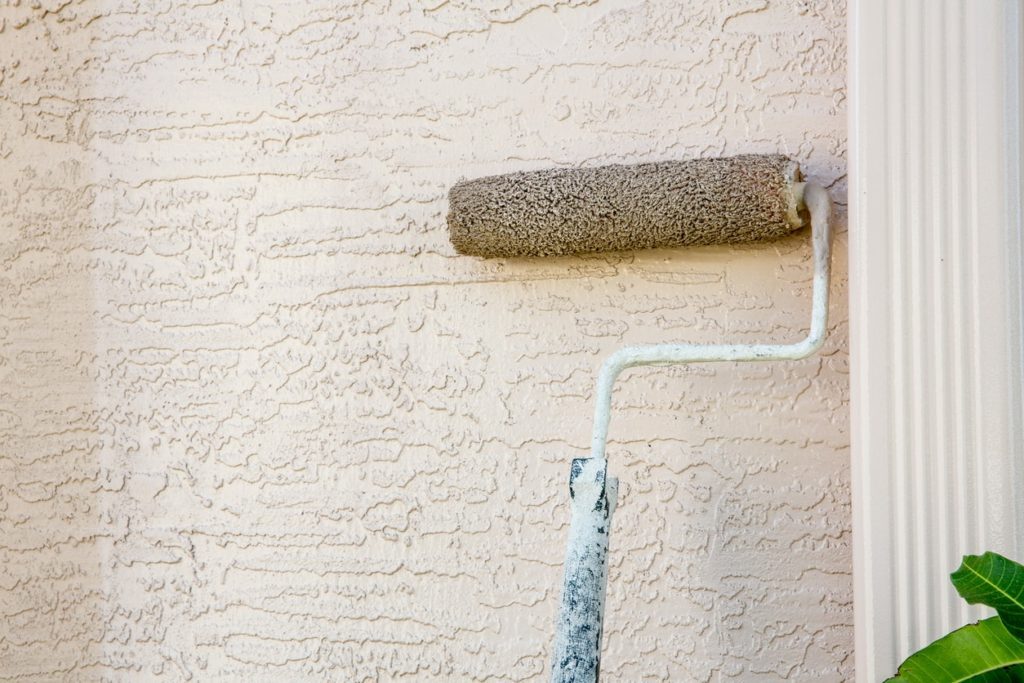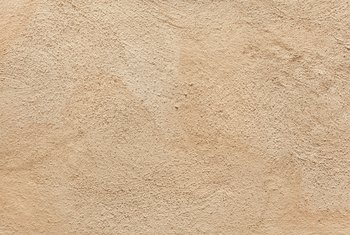Steps for Painting Stucco Homes
Painting your stucco home exterior is an essential part of home maintenance. If you’re into DIY, then you can follow these simple 7 steps to painting stucco. If you are not very familiar with exterior home painting, you may want to call in a professional. They will be knowledgeable in all areas of painting, and may even offer protective services such as waterproofing.
To create a beautiful new home exterior, follow these 7 steps for painting your stucco home.
1. Inspect Your Home For Potential Issues
Before you start painting stucco, you’ll need to inspect it. If it’s been on your home for a while, you may need to do some small repairs. If small patches have come away, or have become damaged, it’s simple to do this yourself. You can buy stucco repair kits that let you fill in these gaps and create a similar finish. If you do this, remember that you should only be doing this with a small area. If there are larger areas that need refinishing, you may need to call in a professional. Once you’ve applied the repairs, leave them 7 to 10 days in order to let it cure fully. This way, it’ll be full ready for painting and won’t come away as you update the color.
2. Pressure Wash Your Walls
The exterior walls can pick up a lot of dirt and grime, even if you are regularly cleaning them. All sorts of things can contribute to it, such as stormy weather and traffic near your home. Because of this, you’re going to need to clean the walls before you can paint them. This will ensure that the paint sticks properly and looks as good as possible. The best way to wash your walls is to pressure wash them. It’s a quick way to clean the walls, and thanks to the powerful spray, you’ll get all the dirt off before washing. You can get a good pressure washer from a hardware store or online, and they’re helpful around the house. It’s well worth investing in one now. To pressure wash your walls, use a low pressure setting and a wide tip. Work from top to bottom to ensure all dirt is directed away from the walls, and it should be done in no time.
3. Remove Mold
Mold can appear on walls within weeks of them being painted. Before you begin painting stucco walls, you’re going to have to ensure there’s no mold left. If you find any, you can treat it with a mold removal solution. Sponge the solution in to ensure it covers the entire area affected, and leave it on for as long as the directions state. Once it’s been removed and the area has dried, you’re ready to paint.
4. Use A Primer First
The best way to get paint to stick to your stucco is to use a good primer. This readies the walls for the finished coat of paint. The paint will stay looking good for longer, meaning you’ll have to spend less time painting it again. Pick a primer that’s designed for your walls. For example, if your stucco is stained, you can buy a stain blocking primer. This will stop the stains bleeding through into the final layer of paint. An exterior waterproof primer is also a great idea, as it will stop damp coming through your walls. It’s a good first defense, so choose your primer carefully. Ensure you paint the entire area with a primer, and give it ample time to dry before you go on to the next layer. This will ensure it’s totally dry and ready to act as an undercoat.
5. Pick A Painting Method
There’s two main techniques for successfully painting stucco; with a roller, or a sprayer.The one you pick will depend on your preferences and the condition of the stucco wall. If the stucco isn’t too rough, then you can use a roller to apply paint. You’ll have to ensure that you’re using a thick nap roller, in order to get into all the crevices in the finish. The rougher the surface is, the thicker nap you’ll need. If you have to use a very thick nap roller, be aware that you may be using more paint in doing so. If the surface is very rough, then a paint sprayer is the way to go. These are available to rent or buy, so you can pick one up quite easily. Sprayers actually offer an easier way to paint as they’re faster and spray evenly, giving you a professional looking finish. When painting stucco, the method you pick will depend on how large the area is that you have to paint, and the time you have to do it in. For larger areas, spraying is better. If you’re just covering a small area, you can easily tackle it with a roller.
6. Check The Weather Before You Paint
Before you start painting stucco walls and homes, check the weather forecast. You want, optimally, a few sunny days for your paint to be applied and dried. This is because water in paint can cause problems later on that you want to avoid. For example, water can cause paint to peel off not long after being applied. If you’re careful, you can avoid these issues and have paint that cures properly.
7. Think About Reaching Higher Areas
If you have a multi level home, you’ll need to reach higher areas in order to paint them properly. Think about how you’re going to do this before you start painting. The best option is a stable ladder that will help you gain access to these areas. If your home is taller, then a ladder won’t do the job. You’ll need to rent scaffolding that will help you safely paint the highest areas of your walls.
Remember, safety first.

Some Things To Consider In The Beginning:
Stucco Issues: Take a look at the existing stucco that is on the house/building and check to see what kind of shape it is in. Are there any patches or cracks that need to be fixed before painting begins?
In most cases a good acrylic caulk (like this one) is the easiest to use and work with but they do make a caulk that has sand added to it for a more professional looking finish that blends a lot better.
More Stucco Issues: Is the stucco peeling off in any places, or are there any areas that need a little TLC? These kind of issues need to be taken care of prior to painting the structure and will make the end result much better. Smaller patches can be fixed using a premixed stucco repair patch material like this and comes in handy for making quick work of SMALL repairs.
How Will You Clean The Surface: Is the stucco that is currently on the house painted or not? It really doesn’t make too much of a difference, both scenarios will require a good pressure washing (2,800 – 3,100 psi) to get rid of all of the loose paint and material that may prevent the paint from sticking to the walls.

Preparing for Paint
Remove dust and dirt from the surface of the stucco. In many cases, this requires only a thorough brushing of the stucco with the stiff bristles of a push broom. If the stucco has a deep texture, however, you might have to use a power washer to get the dirt out of the deepest crevices.
Caulk hairline cracks in the stucco with masonry-compatible caulking. For larger cracks, use a putty knife to remove loose debris first and then fill the cracks with a dry stucco repair product, mixed with water, as directed on the package.
Wait seven to 10 days to allow a stucco repair product to cure before painting. The suggested wait time can be found on the stucco repair product’s instruction label.
Apply painter’s tape around door and window trim.

Smooth Stucco Finishes:
The smooth types of finishes are probably the easiest types of finishes to paint. Repair work is a little tougher to do and make them appear seamless but if you take your time and use the right tools, it should come out pretty good.
Smooth Stucco Wall
Scraping the walls with a large floor scraper will help eliminate any larger items that may be stuck to the surface.
A roller or sprayer will work on these types of finishes but a sprayer will be much quicker and probably have a little bit better results because you can spray a more even amount of paint on the surface. Backrolling is recommended and will help soften the overall appearance. A roller with a 1/2″ nap will work well and perform well, using a roller cover with a thicker nap would be much harder to use, especially for a novice painter.
How Often Should I Apply A Fresh Coat Of Paint To My Walls?
This is a matter of your climate, the quality and application of the paint itself and visual appearance. The short answer is between 3 and 10 years, although I believe the “standard” is about 5 years.
If you are using a quality paint and live in an area where the climate is not as extreme, you could get 10 years out of the paint, it just depends.
Research your area on different social media outlets and forums to see what others are saying to get a better average of what to expect.